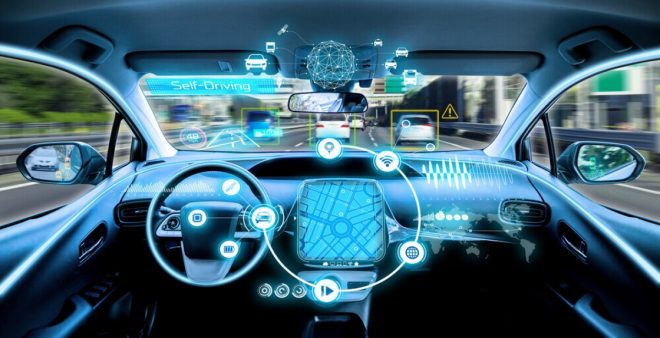You’ve heard of autonomous vehicles — cars that can drive themselves. But what you may not know is that there are actually multiple levels of possible autonomy, and we’re living with some of those early levels now with newer vehicles that includes advanced driver assistance systems (ADAS). These systems help with safety and comfortable driving. The potential systems grow in complexity and autonomy from there: the Society of Automotive Engineers defines six levels of automotive automation, explained here:
Level 0: No Automation — Zero autonomy; the driver performs all the driving, but the vehicle can aid with blind spot detection, forward collision warnings, and lane departure warnings.
Level 1: Driver Assistance — The vehicle may have some driving assist features, but the driver’s still in charge. Such assist features available in today’s vehicles include adaptive cruise control, automatic emergency braking, and lane keeping.
Level 2: Partial Automation — The driver still must drive and monitor the environment at all times–no texting!–but may let the vehicle’s combined automated functions control acceleration, braking, and steering. Such automated functions available today include self-parking and stop-and-go traffic driving.
Level 3: Conditional Automation — The vehicle can itself perform all aspects of the driving task under some circumstances, but the human driver must always be ready to take control at all times with notice. In all other circumstances, the human performs the driving.
Level 4: High Automation — This is a self-driving vehicle! But it still has a driver’s seat and all the regular controls. Though the vehicle can drive and “see” all on its own, circumstances such as geographic area, road conditions, or local laws might require the person in the driver’s seat to take over.
Level 5: Full Automation — The vehicle is capable of performing all driving functions under all environmental conditions and can operate without humans inside. The human occupants are just passengers and need never be involved in driving. A steering wheel is optional in this vehicle.
Sources: Society of Automotive Engineers (SAE); National Highway and Traffic Safety Administration (NHTSA)

